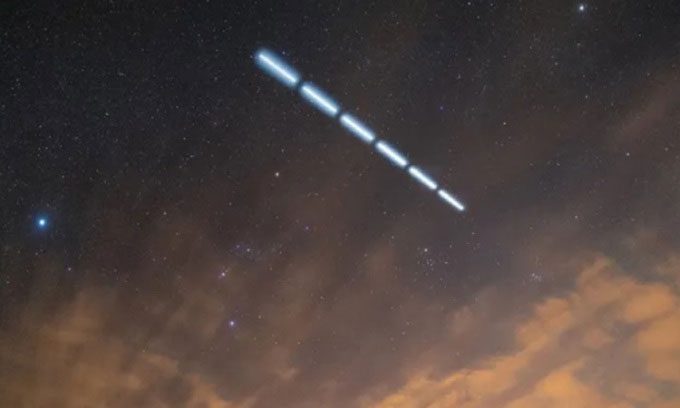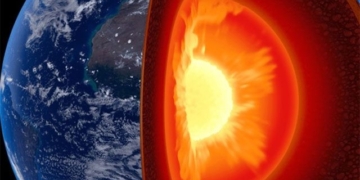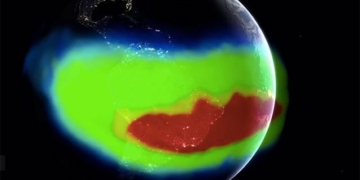A photographer shared a glowing streak in the night sky above Arizona after a piece of the Falcon 9 rocket fell back to Earth.
The images captured by the American photographer showcase the perfect streak created by the SpaceX rocket over Arizona. This recent photo serves as a reminder of the company’s busy rocket launch schedule, as reported by Live Science on April 3.

The streak created by the second stage of the Falcon 9 rocket falling to Earth. (Photo: Jeremy Perez).
On March 30, SpaceX launched two Falcon 9 rockets within a span of less than four hours. The first rocket carried the Eutelsat 36D telecommunications satellite, lifting off at 5:52 PM from the Kennedy Space Center (KSC) in Florida. The second rocket, carrying 23 Starlink satellites, launched from the nearby Cape Canaveral Space Force Station at 9:30 PM local time that same day.
After releasing its payload, the second stage of the rocket— the main component that separates from the reusable booster— exited orbit, fell back to Earth, and ignited in the upper atmosphere of the planet. Initially, photographer Jeremy Perez had planned to capture the descent and reentry of the first rocket from a location near his home in Flagstaff, Arizona, but thick clouds prevented this. However, when the second rocket began a similar operation, the sky cleared, allowing Perez to capture stunning images of the rocket fragment descending to Earth.
In the new photo, Perez combined multiple long-exposure images of the second stage igniting as it soared above. The gaps between the bright streaks represent the shutter points of the camera. In real-time, the event appeared very different. Perez described it as resembling a delicate dandelion petal floating in the air. The light also appeared white in reality instead of the pale blue seen in the image. In an enlarged version of the photo, a second fainter streak can be seen beside the falling debris; this is the light emitted from the satellite the rocket deployed, flying alongside it before beginning its final maneuvers.
On April 1, a Falcon 9 rocket launched from Vandenberg Space Force Base in California, subsequently deploying an additional 22 Starlink satellites into orbit. The company also plans to launch two more Falcon 9 rockets on April 5 and April 7 to place satellites into space. The increasing number of SpaceX rocket launches corresponds with a higher likelihood of people witnessing debris reentering orbit or other phenomena caused by falling rockets, such as the light vortices created by the frozen rocket fuel from Falcon 9’s booster stage.
For example, on March 4, one such vortex was even brighter than the aurora for a brief period in many places across the Arctic. Falcon 9 rockets can be observed from kilometers away as they ascend into the sky and sometimes create holes in the upper atmosphere, leaving behind vibrant red streaks resembling auroras.




















































